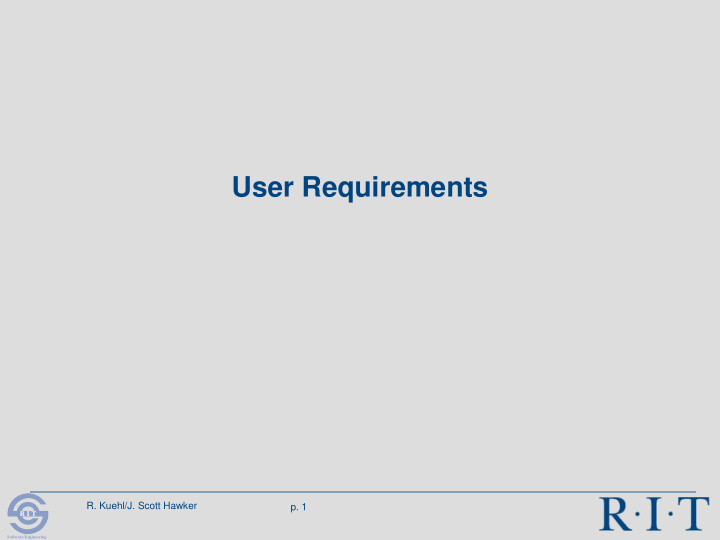



User Requirements R. Kuehl/J. Scott Hawker p. 1 R I T Software Engineering
Who Are the Users? Identify primary and secondary user (work) roles Profile them Model them – what do they do? Scenarios Task analysis Use cases Derive interactive (HCI) design requirements and system functional requirements R. Kuehl/J. Scott Hawker p. 2 R I T Software Engineering
User (Work) Roles Revisited Primary – direct interaction Profile Goals – job and personal Tasks and workflows Work environment Cognitive and physical abilities Skills and experience Personal traits One role played by many people and/or one person plays multiple roles R. Kuehl/J. Scott Hawker p. 3 R I T Software Engineering
Perform Modeling to Understand… Tasks and actions users (may) perform to achieve a goal Task workflow sequences System operations necessary to support user tasks Non-functional qualities S ystem boundaries and external interfaces System infrastructure Exceptions - what may go wrong Problem domain objects the user and system will manipulate R. Kuehl/J. Scott Hawker p. 4 R I T Software Engineering
Requirements Modeling Representation Informal Stories and scenarios Real World Requirements (Task Modeling) Structured Natural Language Semi-formal Requirements (Use Case Models*) Formal Formal Specification Languages Abstract Model Requirements (Requirements Modeling Language (RML)) * The focus of this course R. Kuehl/J. Scott Hawker p. 5 R I T Software Engineering
Scenarios and Stories Scenario – A longer narrative of user and system interactions to accomplish a goal User story – “short, simple description of a feature told from the perspective of the person who desires the new capability” One or two sentences Possible template… As a <user role>, I want <some goal> so that <some reason>. Natural , easy to create, understandable but may be incomplete and ambiguous R. Kuehl/J. Scott Hawker p. 6 R I T Software Engineering
Recommend
More recommend